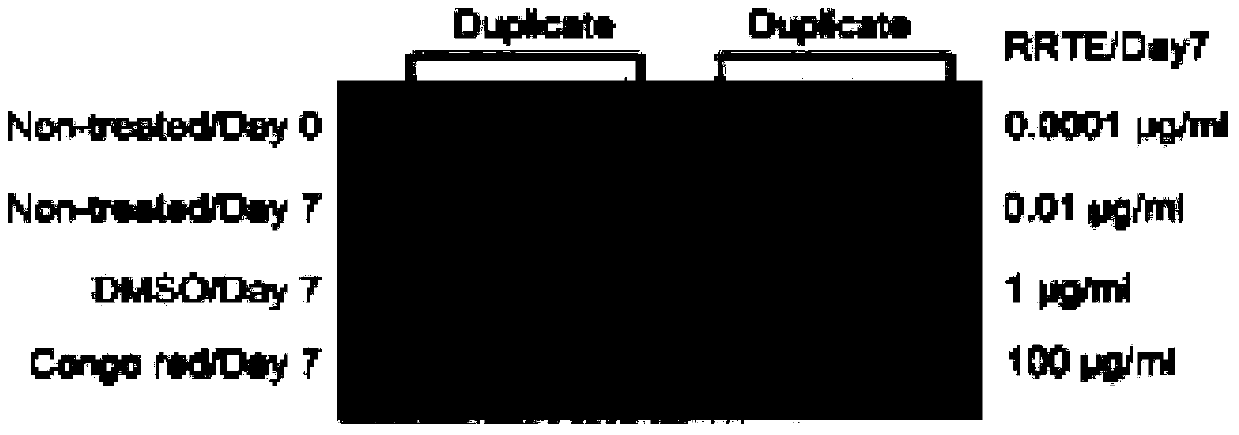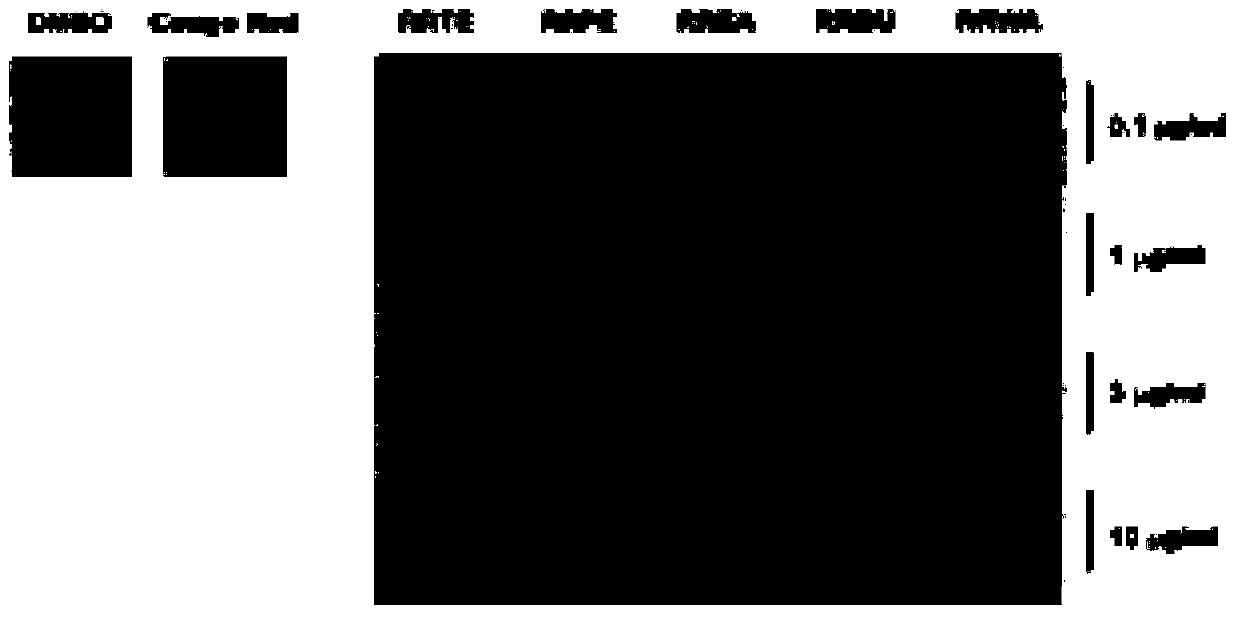Rhodiola rosea extract and isolated compounds and their use in the treatment of neurodegenerative diseases
A neurodegenerative disease and compound technology, applied to Rhodiola rosea extracts and isolated compounds and their application fields in the treatment of neurodegenerative diseases, can solve the problems of reduced therapeutic effect, side effects and the like
- Summary
- Abstract
- Description
- Claims
- Application Information
AI Technical Summary
Problems solved by technology
Method used
Image
Examples
Embodiment 1
[0235] Example 1 - Rhodiola rosea extract inhibits aggregation of α-synuclein protein
[0236] A total extract (TE) of Rhodiola rosea (RR) was prepared. This extract (0.07 μg) was incubated with recombinant-α-synuclein in TBS for 7 days at 37°C. After incubation, samples were filtered using Bio-Dot SF microfiltration devices (Bio Rad) according to the manufacturer's instructions. After filtration, the amount of retained α-synuclein was determined by Western blot analysis.
[0237] As shown in Figure 1, in the untreated control samples, the amount of aggregated forms of the α-synuclein protein was significantly increased at day 7 compared to day 0. Similar amounts of aggregated forms of the α-synuclein protein were found in samples treated with DMSO for 7 days when compared to untreated controls. Samples treated with Congo red, a known inhibitor against α-synuclein aggregation, were used as positive controls. Incubation of α-synuclein protein with 1 μg to 100 μg of RR’s TE ...
Embodiment 2
[0238] Example 2 - Aqueous and ethanol components of Rhodiola rosea extract inhibit aggregation of alpha-synuclein protein
[0239] Preparation of total extract (TE) and fractions of Rhodiola rosea (RR). Recombinant-α-synuclein in TBS was then incubated with the extract (μg / ml) for 7 days at 37°C. After incubation, samples were filtered with Bio-Dot SF microfiltration devices (Bio Rad) according to the manufacturer's instructions. After filtration, the amount of retained α-synuclein was determined by Western blot analysis.
[0240] RR total extract (RRTE) and RR fractions (RRPE (Rhodiola rosea petroleum ether fraction), RREA (Rhodiola rosea ethyl acetate fraction), RRBU (Rhodiola rosea butanol fraction) and RRWA (Rhodiola rosea water fraction)) was incubated with recombinant α-synuclein for 7 days. Filter cut-off assays were performed as described in Example 1. Untreated samples served as negative controls, and Congo red-treated samples served as positive controls.
[024...
Embodiment 3
[0242] Example 3 - Inhibition of α-Synuclein Protein Aggregation
[0243] Compounds RR-C20 (salidroside) and RR-C36 (rosevin) were isolated from RRWA. Then, recombinant α-synuclein in TBS was incubated with compounds RR-C20 and RR-36 for 7 days at 37°C, respectively. After incubation, samples were filtered with Bio-Dot SF microfiltration devices (Bio Rad) according to the manufacturer's instructions. After filtration, the amount of retained α-synuclein was determined by Western blot analysis.
[0244] As shown in Figure 3A, after 7 days of incubation, α-synuclein aggregates increased, and Congo red inhibited the increase in α-synuclein aggregation. RR-C36 (Rosevir) isolated from RRBU or RRWA inhibits α-synuclein aggregation in a dose-dependent manner.
[0245] Figure 3B shows that RR-C36 (rosavir) inhibits the aggregation of α-synuclein in vitro in a dose-dependent manner. The IC50 of RR-C36 anti-aggregation was -0.36 μΜ as determined by PRISM GraphPad (version 5.03).
[...
PUM
 Login to View More
Login to View More Abstract
Description
Claims
Application Information
 Login to View More
Login to View More - R&D
- Intellectual Property
- Life Sciences
- Materials
- Tech Scout
- Unparalleled Data Quality
- Higher Quality Content
- 60% Fewer Hallucinations
Browse by: Latest US Patents, China's latest patents, Technical Efficacy Thesaurus, Application Domain, Technology Topic, Popular Technical Reports.
© 2025 PatSnap. All rights reserved.Legal|Privacy policy|Modern Slavery Act Transparency Statement|Sitemap|About US| Contact US: help@patsnap.com



